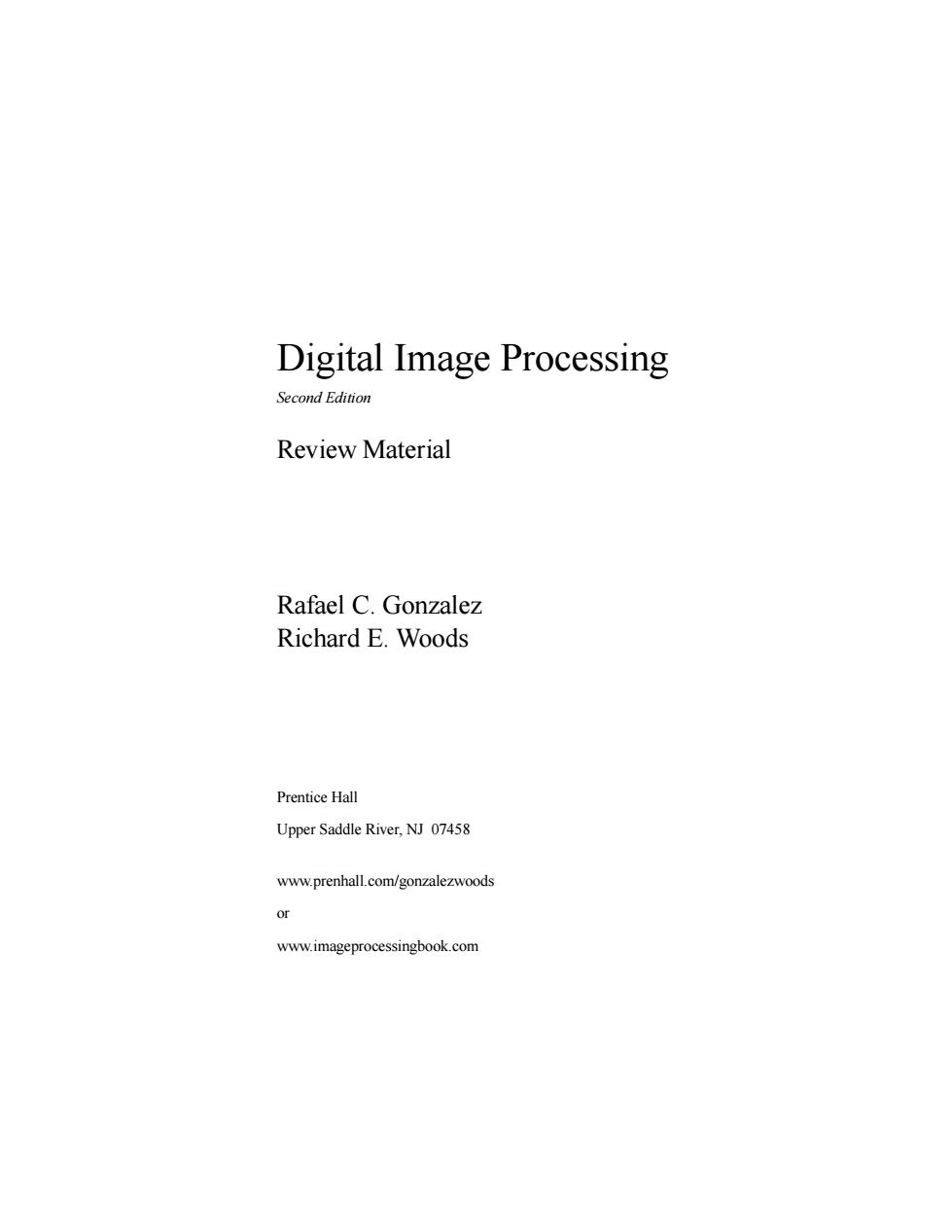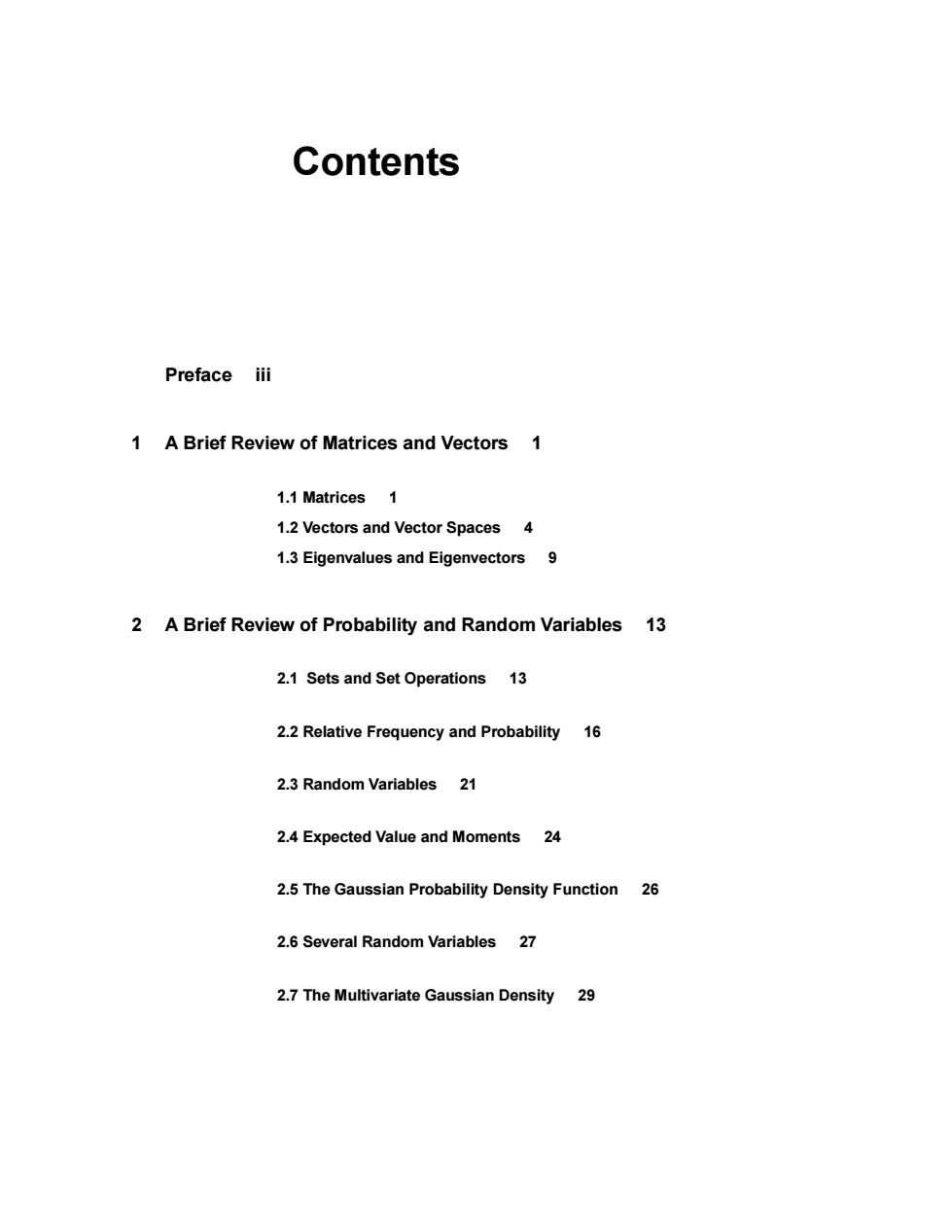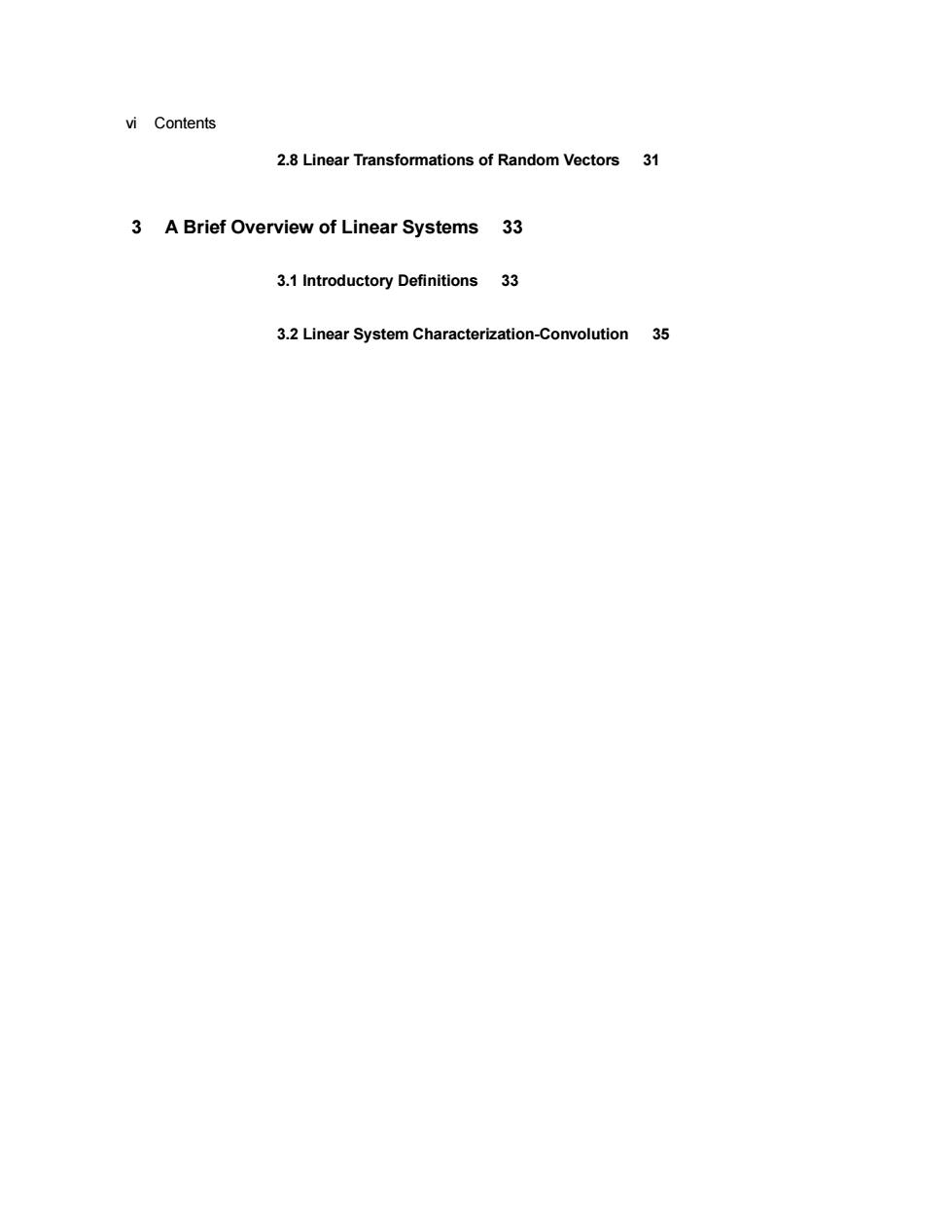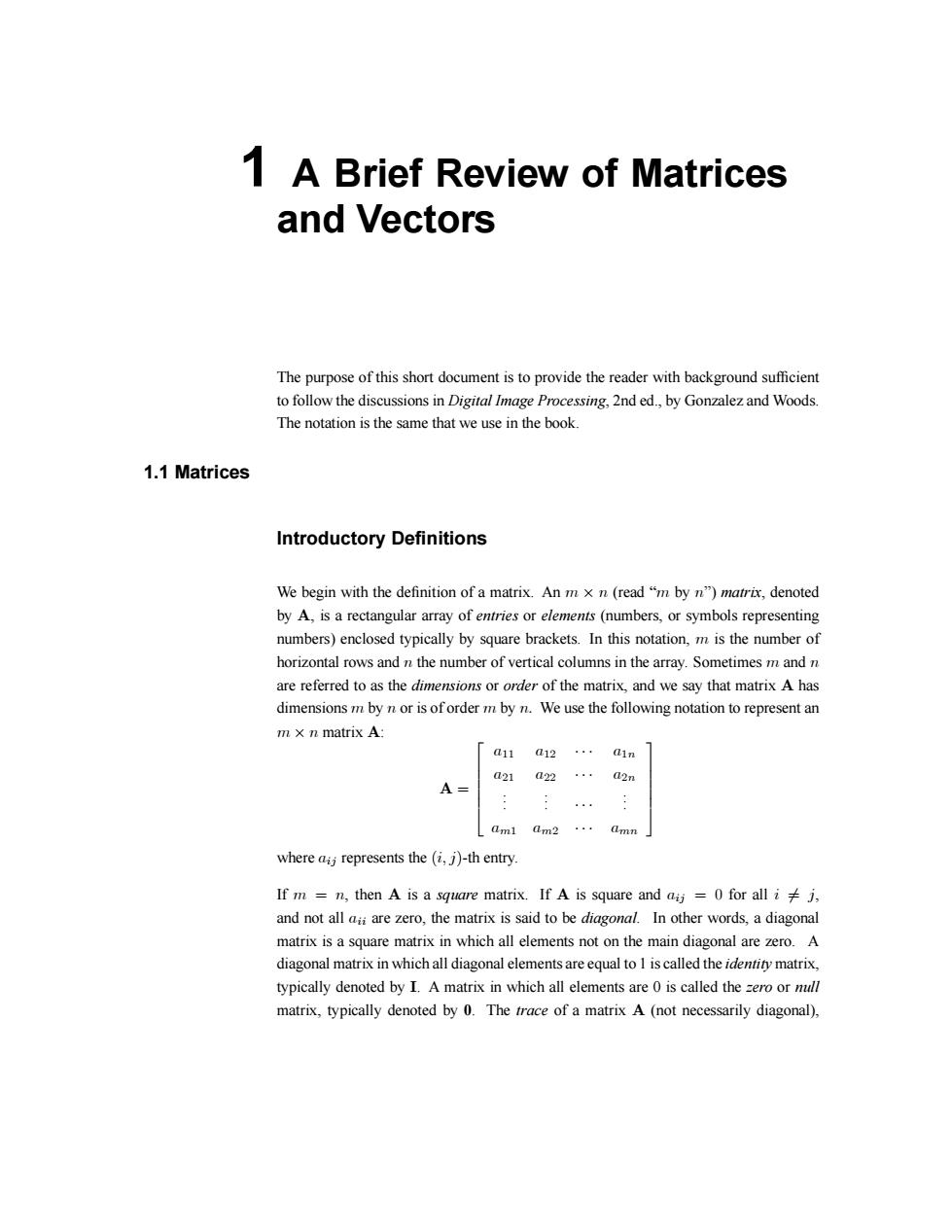
Digital Image Processing Second Edition Review Material Rafael C.Gonzalez Richard E.Woods Prentice Hall Upper Saddle River,NJ 07458 www.prenhall.com/gonzalezwoods or www.imageprocessingbook.com
Digital Image Processing Second Edition Review Material Rafael C. Gonzalez Richard E. Woods Prentice Hall Upper Saddle River, NJ 07458 www.prenhall.com/gonzalezwoods or www.imageprocessingbook.com

Preface The purpose of this brief review is to provide the reader with the necessary background to follow material in the book dealing with matrices and vectors,probability,and linear systems.The review is divided into three main sections,each dealing one of the three preceding topics.The following material is highly focused to the needs of someone needing a refresher in one of these topics.Whenever possible,we have used the same notation employed in the text
Preface The purpose of this brief review is to provide the reader with the necessary background to follow material in the book dealing with matrices and vectors, probability, and linear systems. The review is divided into three main sections, each dealing one of the three preceding topics. The following material is highly focused to the needs of someone needing a refresher in one of these topics. Whenever possible, we have used the same notation employed in the text

Contents Preface iii 1 A Brief Review of Matrices and Vectors 1 1.1 Matrices 1 1.2 Vectors and Vector Spaces 4 1.3 Eigenvalues and Eigenvectors 9 2 A Brief Review of Probability and Random Variables 13 2.1 Sets and Set Operations 13 2.2 Relative Frequency and Probability 16 2.3 Random Variables 21 2.4 Expected Value and Moments 24 2.5 The Gaussian Probability Density Function 26 2.6 Several Random Variables 27 2.7 The Multivariate Gaussian Density 29
Contents Preface iii 1 A Brief Review of Matrices and Vectors 1 1.1 Matrices 1 1.2 Vectors and Vector Spaces 4 1.3 Eigenvalues and Eigenvectors 9 2 A Brief Review of Probability and Random Variables 13 2.1 Sets and Set Operations 13 2.2 Relative Frequency and Probability 16 2.3 Random Variables 21 2.4 Expected Value and Moments 24 2.5 The Gaussian Probability Density Function 26 2.6 Several Random Variables 27 2.7 The Multivariate Gaussian Density 29

vi Contents 2.8 Linear Transformations of Random Vectors 31 3 A Brief Overview of Linear Systems 33 3.1 Introductory Definitions 33 3.2 Linear System Characterization-Convolution 35
vi Contents 2.8 Linear Transformations of Random Vectors 31 3 A Brief Overview of Linear Systems 33 3.1 Introductory De®nitions 33 3.2 Linear System Characterization-Convolution 35

1 A Brief Review of Matrices and Vectors The purpose of this short document is to provide the reader with background sufficient to follow the discussions in Digital Image Processing,2nd ed.,by Gonzalez and Woods. The notation is the same that we use in the book. 1.1 Matrices Introductory Definitions We begin with the definition of a matrix.An m x n(read"m by n")matrix,denoted by A,is a rectangular array of entries or elements(numbers,or symbols representing numbers)enclosed typically by square brackets.In this notation,m is the number of horizontal rows and n the number of vertical columns in the array.Sometimes m and n are referred to as the dimensions or order of the matrix,and we say that matrix A has dimensions m by n or is oforder m by n.We use the following notation to represent an m x n matrix A: a11 a12.· din a21 a22 ·a2n A= am2···amn where ai;represents the (i,j)-th entry. If m =n,then A is a square matrix.If A is square and aij =0 for all ij, and not all ai are zero,the matrix is said to be diagonal.In other words,a diagonal matrix is a square matrix in which all elements not on the main diagonal are zero.A diagonal matrix in which all diagonal elements are equal to I is called the identity matrix, typically denoted by I.A matrix in which all elements are 0 is called the zero or null matrix,typically denoted by 0.The trace of a matrix A (not necessarily diagonal)
1 A Brief Review of Matrices and Vectors The purpose of this short document is to provide the reader with background suf®cient to follow the discussions in Digital Image Processing, 2nd ed., by Gonzalez and Woods. The notation is the same that we use in the book. 1.1 Matrices Introductory De®nitions We begin with the de®nition of a matrix. An m £ n (read |m by n}) matrix, denoted by A, is a rectangular array of entries or elements (numbers, or symbols representing numbers) enclosed typically by square brackets. In this notation, m is the number of horizontal rows and n the number of vertical columns in the array. Sometimes m and n are referred to as the dimensions or order of the matrix, and we say that matrix A has dimensions m by n or is of order m by n: We use the following notation to represent an m £ n matrix A: A = 2 6 6 6 6 4 a11 a12 ¢ ¢ ¢ a1n a21 a22 ¢ ¢ ¢ a2n . . . . . . ¢ ¢ ¢ . . . am1 am2 ¢ ¢ ¢ amn 3 7 7 7 7 5 where aij represents the (i; j)-th entry. If m = n, then A is a square matrix. If A is square and aij = 0 for all i 6= j, and not all aii are zero, the matrix is said to be diagonal. In other words, a diagonal matrix is a square matrix in which all elements not on the main diagonal are zero. A diagonal matrix in which all diagonal elements are equal to 1 is called the identity matrix, typically denoted by I. A matrix in which all elements are 0 is called the zero or null matrix, typically denoted by 0. The trace of a matrix A (not necessarily diagonal)